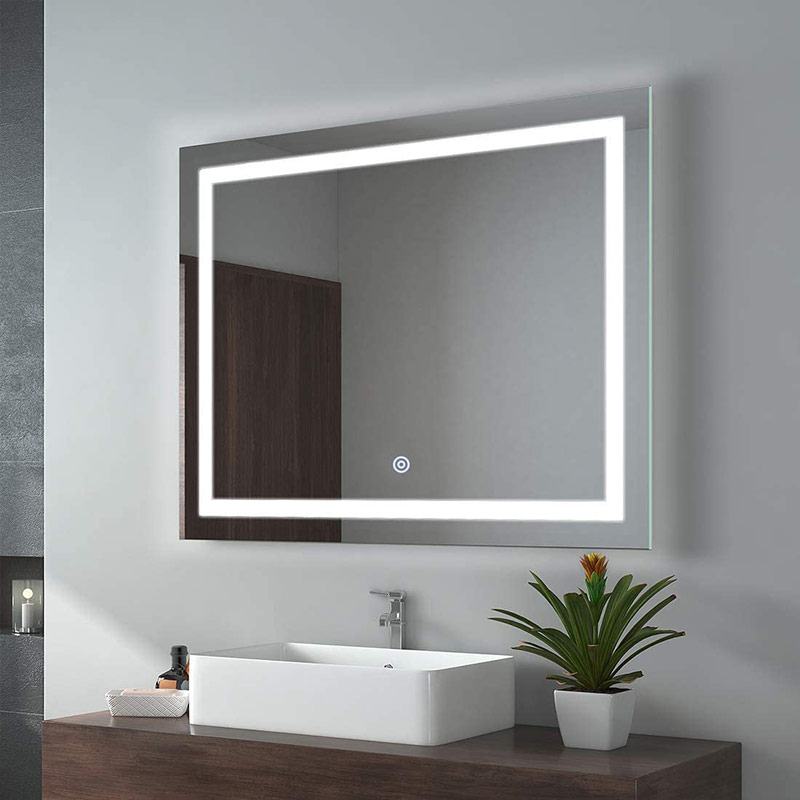Improving the moisture resistance of a lighted mirror is particularly important if you plan to install the mirror in a bathroom or another humid environment. Here are steps to enhance the moisture resistance of your lighted mirror:
Purchase a Moisture-Resistant Mirror: When shopping for a lighted mirror, look for models specifically designed for use in humid or moisture-prone areas like bathrooms. These mirrors are often labeled as "moisture-resistant" or "fog-free."
Sealed Electrical Components: Ensure that the mirror's electrical components, such as the wiring and LED lights, are sealed and protected against moisture. Look for a mirror with IP-rated protection (e.g., IP44) to indicate resistance to moisture and splashes.
Anti-Fog Coating: Some moisture-resistant mirrors come with an anti-fog coating on the mirror surface. This coating prevents condensation and fog from forming on the mirror when it's exposed to humidity. Anti-fog mirrors are particularly useful in bathrooms and shower areas.


Ventilation: Ensure that the room where the mirror is installed has adequate ventilation. Proper ventilation helps reduce humidity levels and prevents excessive moisture buildup.
Mounting Considerations: If you are mounting the mirror on a bathroom wall, ensure that there is proper wall ventilation behind the mirror. This can help reduce the moisture that may accumulate behind the mirror, potentially causing damage.
Silicone Sealant: Use silicone sealant around the edges of the mirror frame, especially if the mirror is mounted on a wall. This helps create a barrier that prevents moisture from seeping into the gaps between the mirror and the wall. It also ensures a secure installation.
Avoid Submersion: Even moisture-resistant mirrors should not be submersed in water. Be cautious not to expose the mirror to direct streams of water, such as from a showerhead or faucet.
Wipe Off Excess Moisture: After using the mirror in a humid environment, wipe off any excess moisture or water droplets from the mirror's surface. This can help prevent water spots and keep the mirror in good condition.
Regular Cleaning: Keep the mirror clean and free of grime, soap scum, and other substances that can accumulate in a bathroom. Regular cleaning prevents buildup that could affect the mirror's moisture resistance.
Proper Maintenance: Follow the manufacturer's maintenance instructions to ensure the mirror's moisture-resistant features remain effective. This may include specific cleaning recommendations or guidelines for protecting electrical components.
Use Exhaust Fans: If your bathroom has an exhaust fan, use it during and after showers or baths. Proper ventilation can help reduce the overall humidity in the room, which in turn benefits the moisture resistance of the mirror.
Avoid Direct Splashes: If the mirror is near a sink, try to avoid direct splashes of water onto the mirror's electrical components. While moisture resistance helps protect against minor splashes, direct exposure to water should be minimized.
By taking these steps, you can improve the moisture resistance of your lighted mirror, helping to prevent damage from humidity and extending the mirror's lifespan, especially in high-moisture environments like bathrooms.

 English
English عربى
عربى Español
Español















.jpg?imageView2/2/format/jp2)
-1.jpg?imageView2/2/format/jp2)



